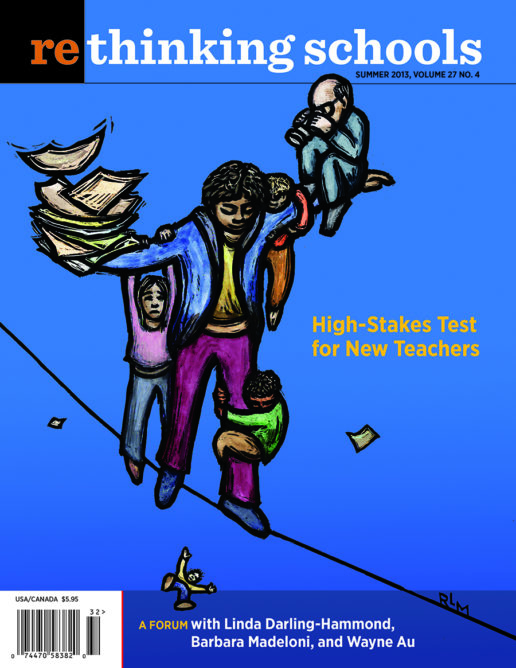Preview of Article:
Stealing Home
Eminent domain, urban renewal, and the loss of community
This is the second of a two-part article on Stealing Home, a unit about ways the homes of people of color and poor people have been stolen through race riots and urban renewal. The first part, Burned Out of Homes and History: Unearthing the Silenced Voices of the Tulsa Race Riot, was published in the fall 2012 issue of Rethinking Schools.
Desiree Barksdale’s description reveals the pain that many students feel when their home is stolenthrough eviction, divorce, court orders that place them in foster care, or gentrification that pushes low-income and people of color out of our school’s neighborhood and into the numbers, as the students call the outer ring of Portland where they have landed.
I knew it was the eviction notice that came no matter how hard [my mother] worked, how good we were, how friendly of a neighbor we were. I was young, but I wasn’t stupid. I knew we were going to have to move again, but so soon this time? Would we end up in a shelter again? Would we have to switch schools? Again? Tears swelled my eyes and poured down my dirty, 8-year-old cheeks. My tiny fists clenched so tight my knuckles turned white, my whole body shook with angry sobs. Barely brushing 4 feet tall, I was going to destroy the whole world for what they were doing to me: for taking away my security, my happiness, my home.
After hearing students like Desiree discuss the gentrification of Jefferson High School’s neighborhood, Dianne Leahy, the outrageously insightful and hardworking teacher with whom I co-taught junior English for the last two years, and I decided to create a year-long curriculum we christened Stealing Home. In the unit, we look at the history and literature of stolen homes and landfrom Native American removals to reservations, to the violent expulsions of African Americans during the 1920s and ’30s, to the internment of Japanese Americans during World War II. We look at the resistance that emerged. The last segment of our uniteminent domain and urban renewalbrings the teaching back to our neighborhood and the students’ anger over gentrification that initiated our investigation.
To understand how eminent domain works, students consider Chvez Ravine, where Dodger Stadium now lives, and Albina, the historic African American neighborhood that Jefferson High School anchors. Briefly: When the local, state, or federal government determines that they want to expand a highway, build a bridge or park, erect a hospital, or lay down railroad tracks, they can seize someone’s house or land with due compensation, with or without the owner’s consent. Sounds fair, right? Often this has worked for the public goodthink parks, think wilderness areas, think the Oregon coastline, think the Redwood National Forest in California. Even think public housing projects that provide homes to people who might not otherwise be able to afford them. Also think: Who lived on these lands that became public land? Guess whose homes most often lay in the path of progress? Eminent domain provided the machinery to plow under the homes of those living in Chvez Ravine and Albina during the 1950s and ’60s.

